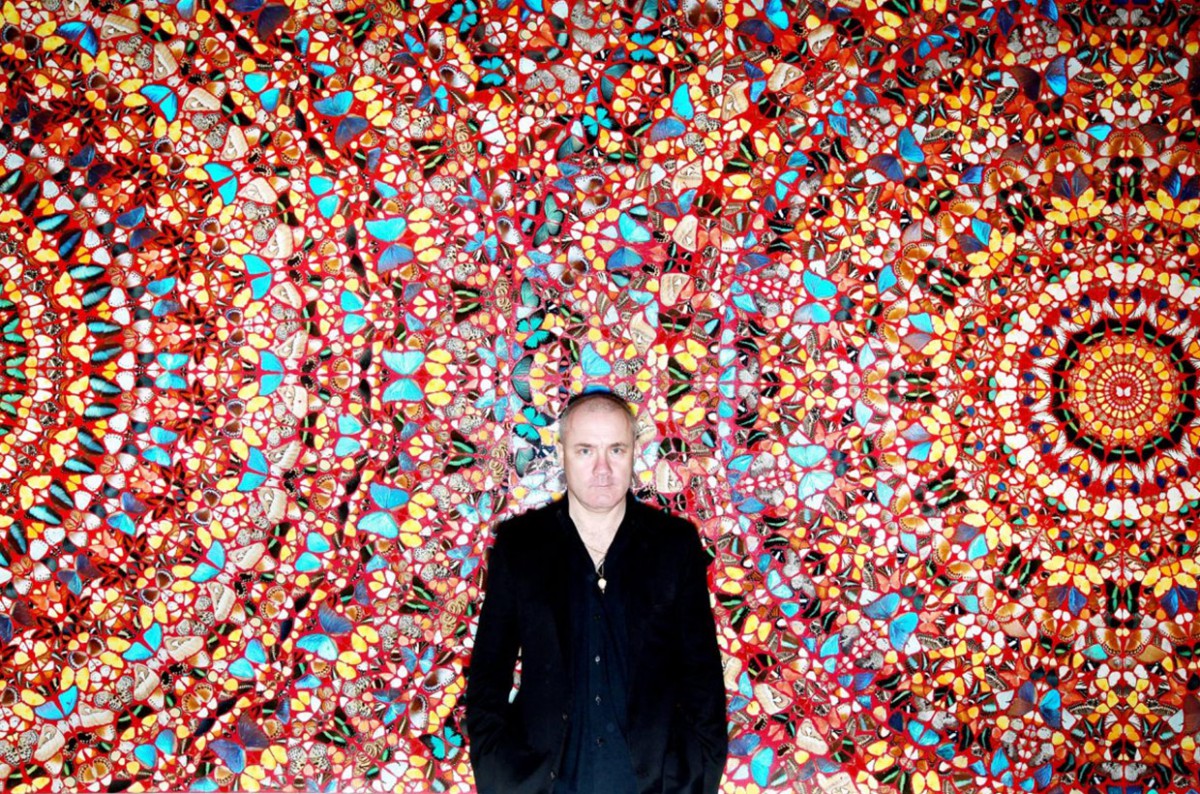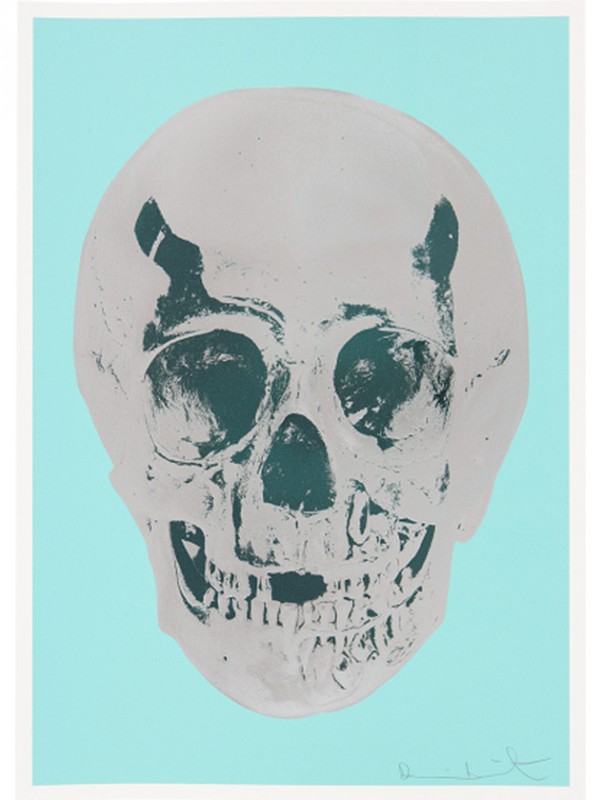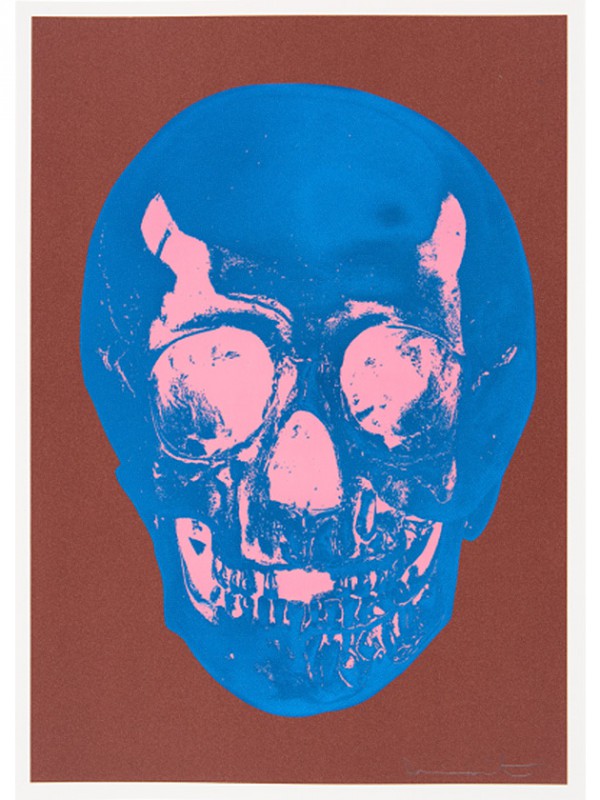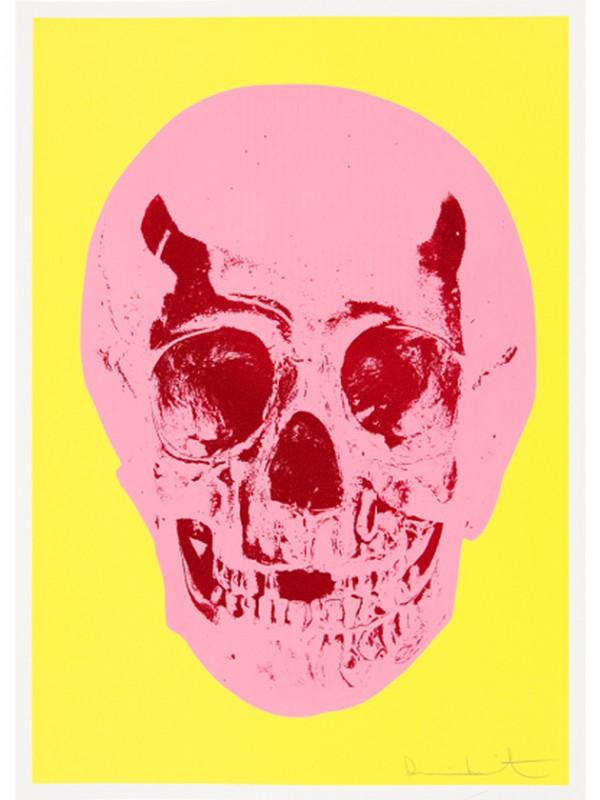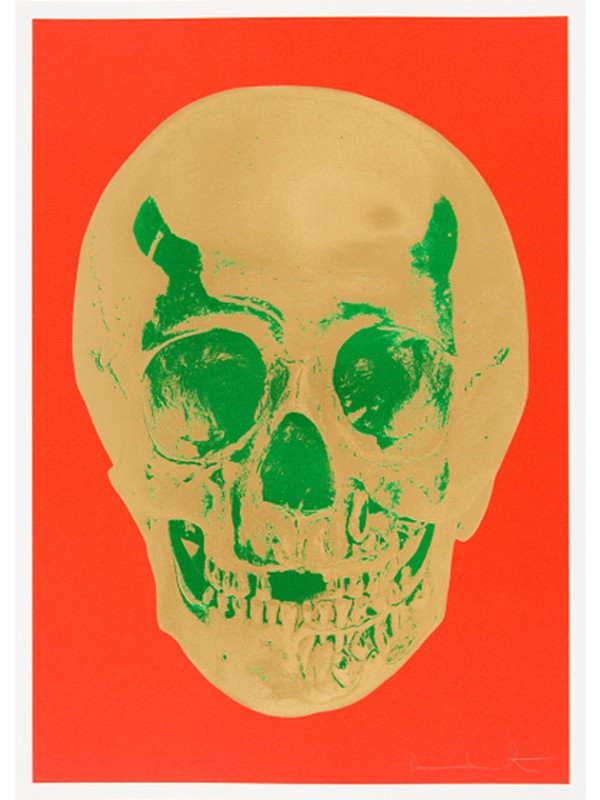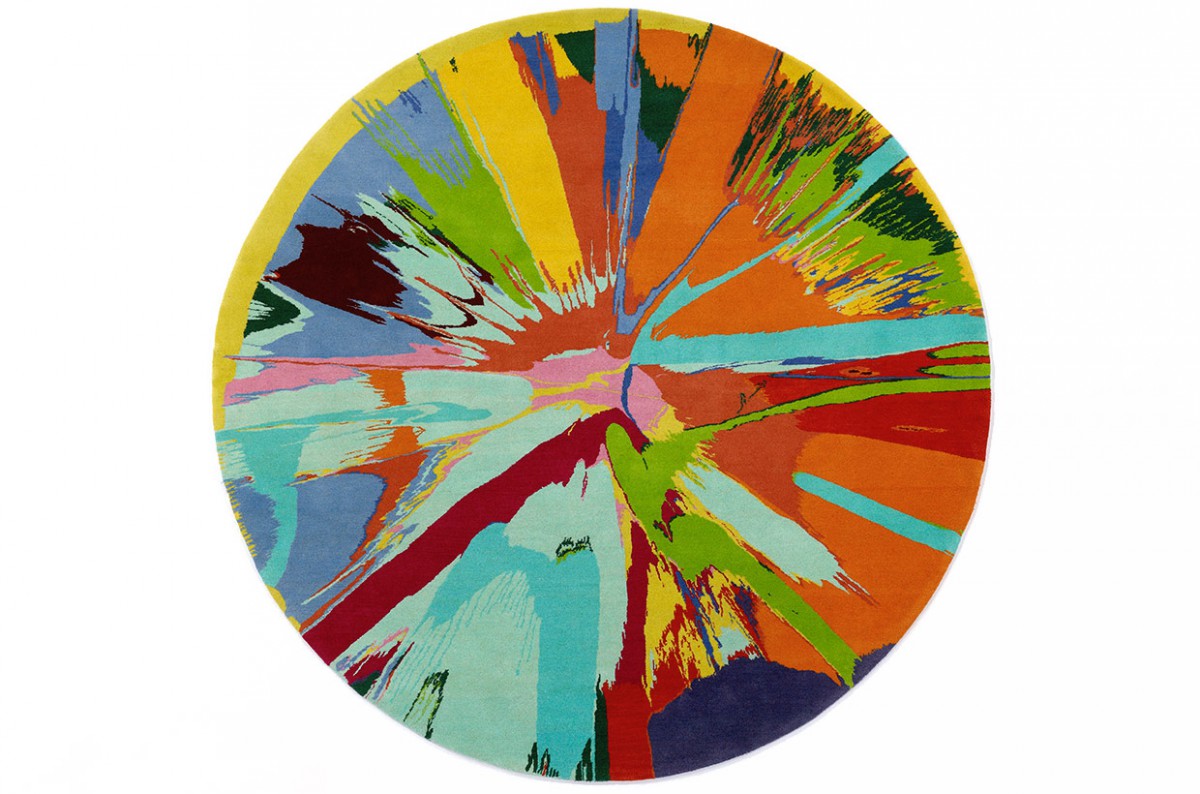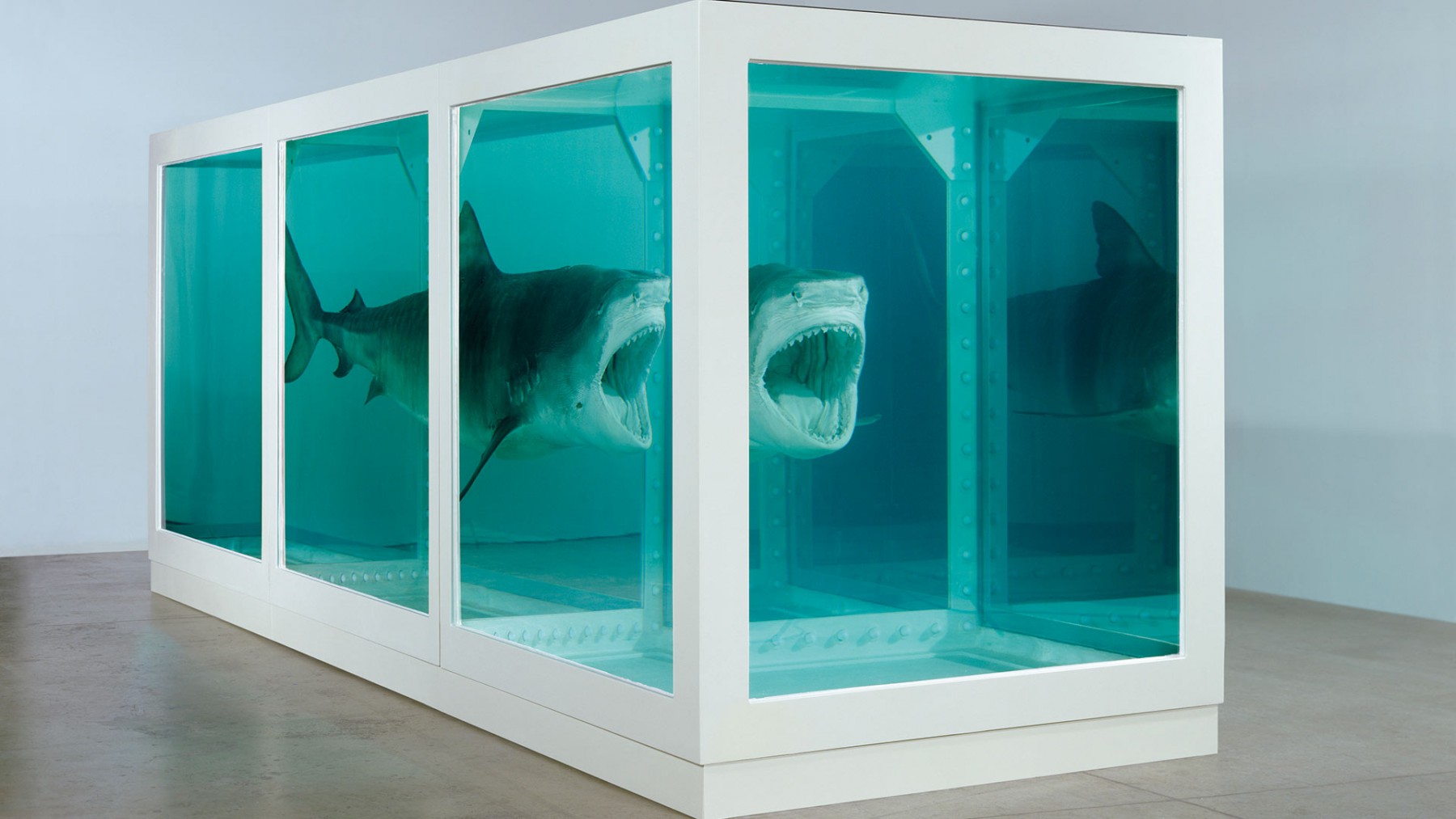Anyone for a Hirst? by Nana Gilbert | 20th October, 2014 | Offices
Briton Damien Hirst is one of the most successful artists of his generation. His paintings and sculptures sell for millions of dollars. As the co-founder of the Other Criteria gallery store, he wants to make his works of art, and those of other artists, affordable to everyone – as limited editions or produced in larger numbers. We visited his newly opened gallery in New York’s SoHo neighborhood.
The first edition sold out completely within 24 hours. At the opening party of Damien Hirst’s gallery boutique Other Criteria in New York, potential buyers kept outbidding each other for his work “Mickey Mouse” from the very first hour. In no time, the 50 limited edition copies were gone. Consisting of twelve colored dots of various sizes, the work is very abstract, but clearly looks like Mickey Mouse – and like a Damien Hirst. The initial asking price for a signed screen print was 9,400 dollars but by the end of the night that price had risen to 18,700 dollars. Not exactly a bargain, but quite affordable for a “real” Hirst. And only a fraction of the amount you would have to part with in order to acquire paintings and sculptures by the British artist, who is considered the pop star of the art world. His colorful paintings featuring pills and dots, and his dead animals preserved in formaldehyde fetch millions of dollars these days. The value of his legendary diamond-encrusted skull is estimated to be around 50 million pounds.
The two-story showroom in SoHo is the first Other Criteria location outside the United Kingdom, and boasting 280 square meters, it is significantly larger than the galleries in London and Ilfracombe. The whole of the product range is on display here, so a visit to the gallery seems akin to a cultural journey of discovery. Hidden away in this treasure trove are a great number of items, large and small, by 35 international artists, and a lot of irony, humor and profound ideas, which often only become apparent on closer inspection.
So what exactly are these “other criteria” the gallery’s name promises? “Well, Damien and I just came up with the name off the top of our heads. He wanted to create things which were outside his usual area of work. So, these other criteria just consist of anything we like and are interested in. It all started with books, back then,” Beard remembers. “Back then” was 2005. The year Damien Hirst founded Other Criteria with Hugh Allen and Frank Dunphy, initially as a publishing house. Hirst wanted to be independent, and so able to publish books himself: books of his own works, but as a passionate art collector, also those of fellow artists whose works he appreciates – be they young and unknown, or well-established. Four years later the creative team opened their first gallery in London, followed by a second UK store in Ilfracombe. These days the three produce a vast variety of multiples by artists like Cindy Sherman, Kehinde Wiley and Jeff Koons, in all kinds of formats: limited edition prints, furniture, sculptures, T-shirts, crockery, skateboards and other curiosities. And of course, they also still publish a large number of books.
The concept of “art for everybody” is not new. Even Marcel Duchamp already had his art objects produced in multiples. In the 1960s, the serial production of art objects was meant to make the large-scale consumption of art possible. Furthermore, it revolutionized the previously elitist art world. German artist Joseph Beuys also used this approach to guarantee his artistic immortality. “When you have all my multiples, you have all of me,” he mused. Beuys’ contemporary colleagues like Gerhard Richter, Takashi Murakami and Tracey Emin also sometimes produce multiple editions of their works. With the aid of limited edition prints, Siegfried Sander, too, has been trying to make art accessible to the masses in his gallery “Multiple Box” in Hamburg since 1998. New York-based mega-gallery owner Larry Gagosian opened his own boutique for affordable objets d’art and limited editions a few years ago. However, as the curator of the publishing house and the galleries he himself founded, Damien Hirst is the first famous artist to put this philosophy into practice.
That it is Hirst, of all people, is surprising: his works have, in recent years, contributed to an already booming art market almost reaching fever pitch. At auctions, one record sale follows the next. Last year, Christie’s auctioned off Francis Bacon’s triptych “Three Studies of Lucian Freud” for 142.4 million dollars, making it the most expensive work of art ever sold at auction. On the other hand, museums around the world are currently putting on blockbuster exhibitions, which enjoy record numbers of visitors.
So is art slowly being reduced to a mere consumer good or status symbol? And do stores like Other Criteria contribute to this, when they sell art printed onto beach towels and coffee mugs? “We are not like museums, which turn the most famous works of art in their collections into souvenirs in the form of fridge magnets and postcards. We collaborate with the artists and give them the opportunity to do what they like. Especially well-known artists often want to share their works of art with people who appreciate their art, but cannot afford the originals. And some of them happen to like printing their work on a T-shirt,” Beard says, defending their approach. Other Criteria has not been founded to help its creators get rich, he adds, and you can sense that he means this. “We only want to do what we love doing – with the artists we love.”
The artists, whose works are sold at Other Criteria, are handpicked by Damien Hirst and given total artistic freedom. “We don’t follow a strict approach, but let the artists decide what they feel like doing. We also don’t put any pressure on them by imposing deadlines. The work is done, when it’s done,” says Jason Beard.
Other Criteria gives the artists free rein, but does provide them with production facilities. Without these, such limited edition special projects could not get off the ground financially. “We put great emphasis on the manufacturing process and on quality. We look for suitable craftspeople and traditional manufacturers for each project, and still have everything produced by hand most of the time,” says Beard. For example, Other Criteria introduced Don Brown to Munich-based porcelain makers Nymphenburg. With the help of their know-how, the sculptor designed 20 delicate porcelain nude sculptures of his wife Yoko. The life-sized, woolen “Love” lifebuoys by John Isaacs were crafted by a tailor in London. “We want to encourage artists to try out totally new and unfamiliar things, and look forward to the results each time,” says Beard. NG
